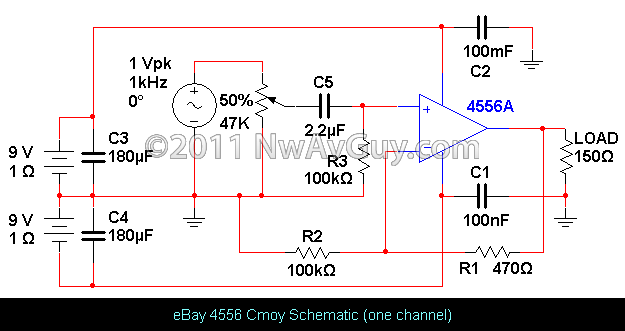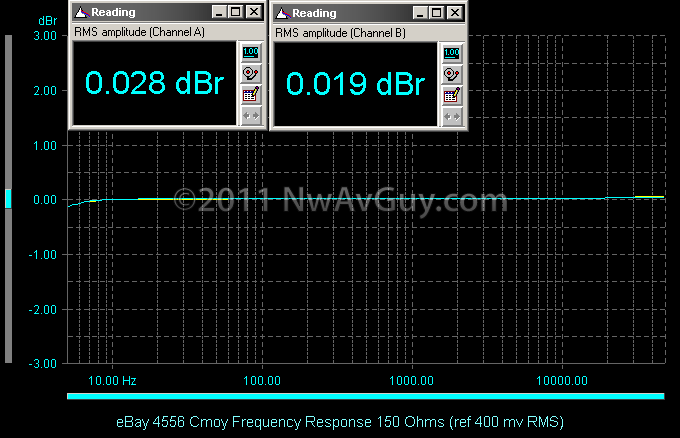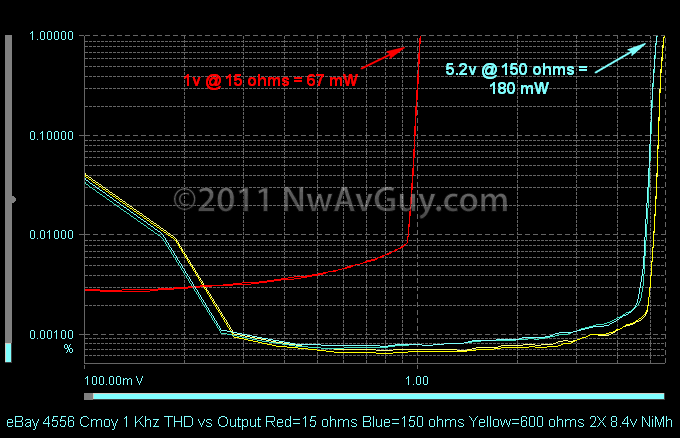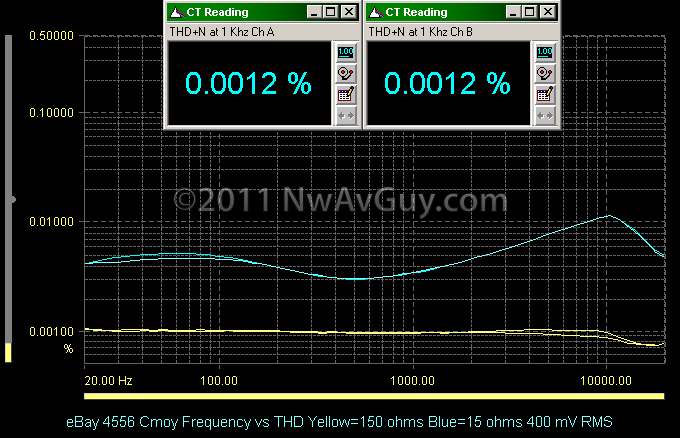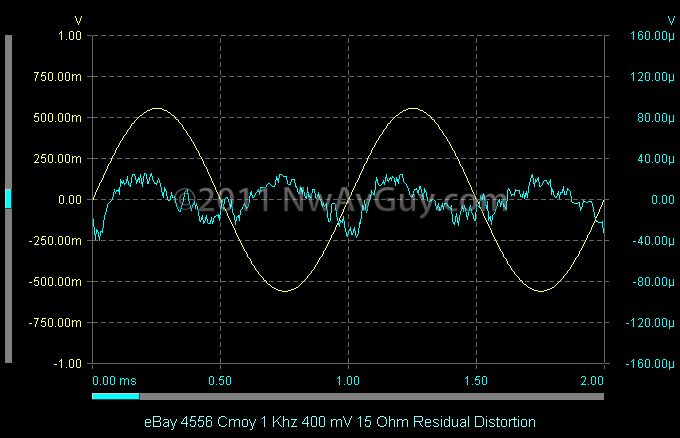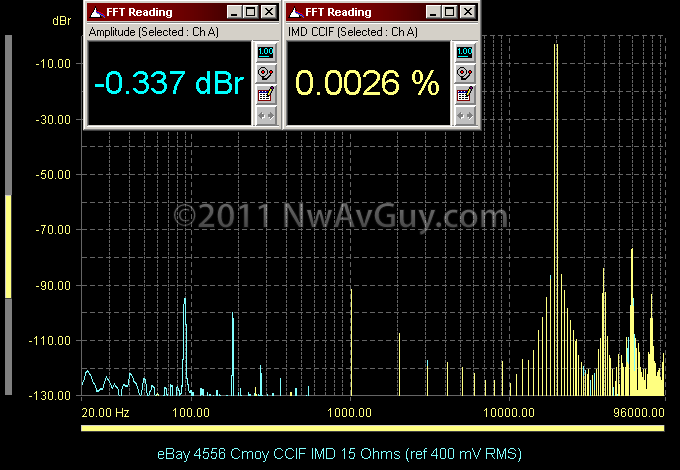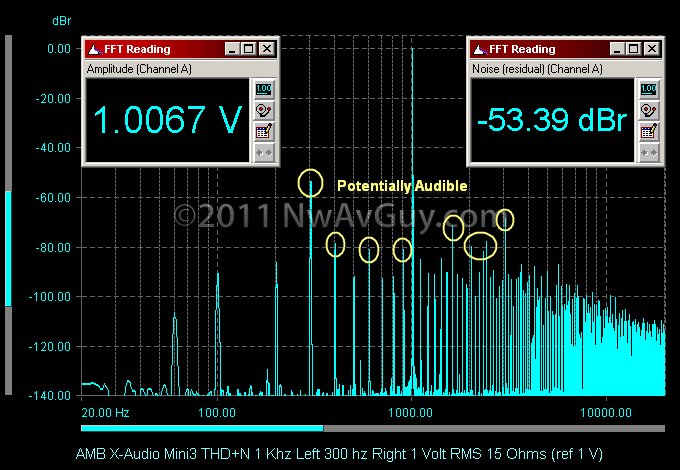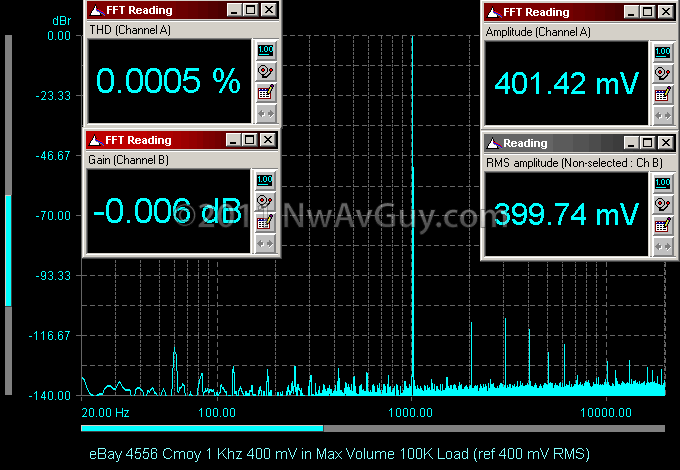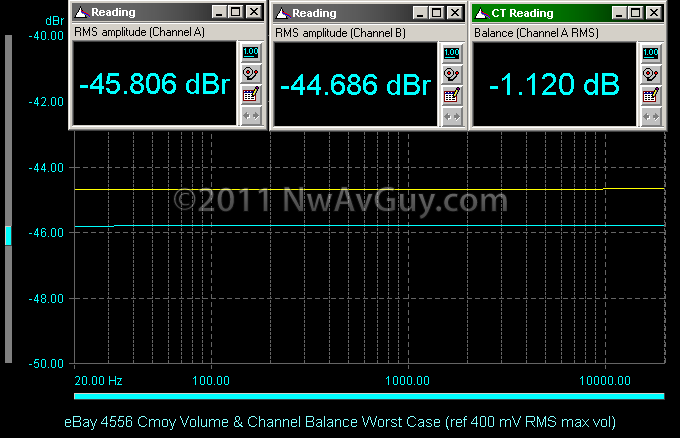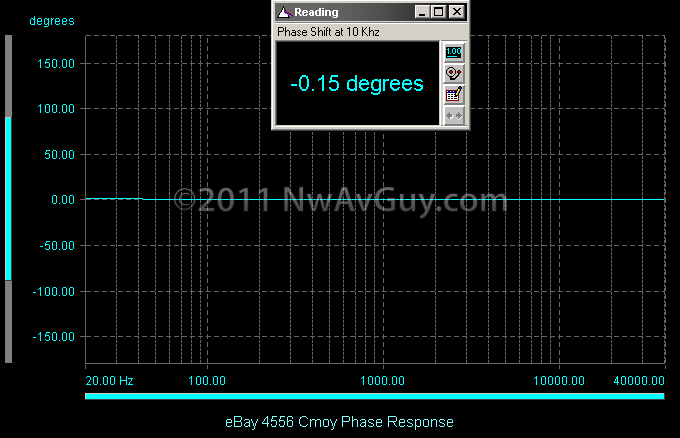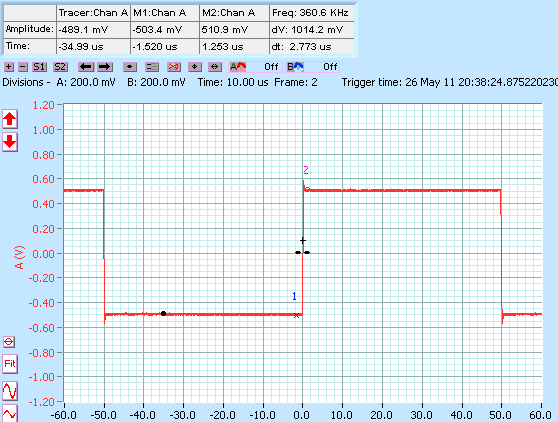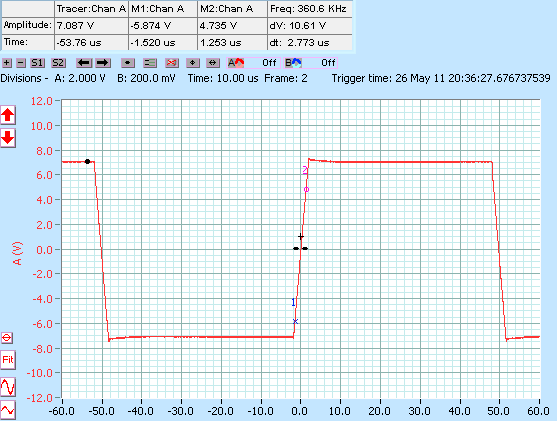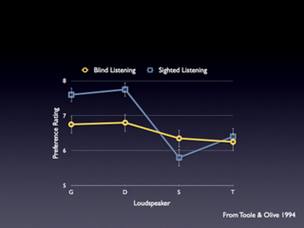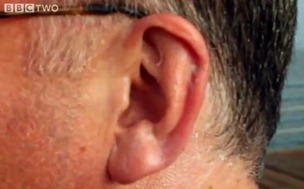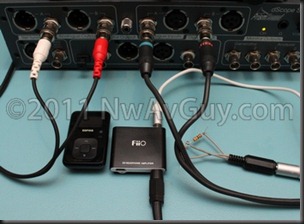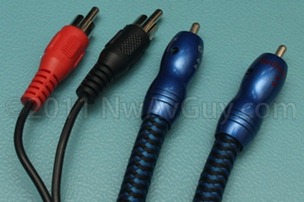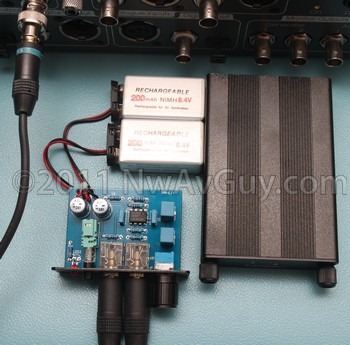 VIRTUAL GROUND VS REAL GROUND: I recently tested the popular AMB DIY Mini3 and was disappointed in the performance. The Mini3’s virtual ground was intended to be an improvement on a classic Cmoy but creates serious new problems. I wondered how a classic Cmoy with a conventional ground would compare. See my 3 Channel Virtual Ground article for more.
VIRTUAL GROUND VS REAL GROUND: I recently tested the popular AMB DIY Mini3 and was disappointed in the performance. The Mini3’s virtual ground was intended to be an improvement on a classic Cmoy but creates serious new problems. I wondered how a classic Cmoy with a conventional ground would compare. See my 3 Channel Virtual Ground article for more.
HERITAGE: Many would argue the humble Cmoy is the headphone amp that started a headphone DIY craze. It was originally designed by Chu Moy and I’m sure tens of thousands have found their way into Altoid tins and other DIY enclosures. It’s similar to the original Grado RA1 headphone amp and is extremely simple. It’s an ideal first time DIY project and there are completed Cmoy amps from a variety of sources—although many deviate significantly from the original such as the Mini3 does.
BUY OR BUILD? I could make a Cmoy from scratch, or use someone else’s PC board, but decided to save time and test a ready-to-rock version complete with a Mini3-like aluminum enclosure. The Cmoy tested here was purchased with Buy It Now on eBay for $39 with free shipping direct from China. It’s a classic dual battery design without any gimmicks or supposed “enhancements”.
FATAL FLAWS & eBAY: Nearly every “no name” audio or DIY product I’ve encountered sold directly out of Asia on eBay has been seriously flawed in one or more ways. This Cmoy was yet another example. I wonder if these flawed products were originally intended to be sold through regular retail channels before someone found the Fatal Flaw. Sometimes the flaws are relatively obvious, as is the case with this Cmoy, and sometimes they only show up if you make the right measurements. But, out of probably 20+ products I’ve encountered, I’d say 90% had at least one significant flaw like this Cmoy does.
NO RETURNS: Would you return a $39 amp to China? I suspect the vendors know few will and eBay's used to “liquidate” flawed audio products--sort of like a factory outlet store selling “irregular” clothing. The flaws are not disclosed, the vendors frequently change their names to dodge poor feedback, and returns are expensive or not allowed. The seller for this amp has disappeared from eBay listings.
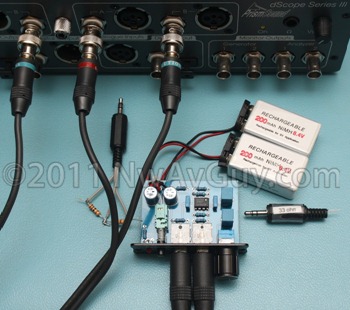 GAIN? WHAT GAIN? The very definition of “amplifier” is it’s supposed to amplify the input signal—i.e. make it larger and more powerful. This amp’s Fatal Flaw is having no gain. It doesn’t amplify! You put 200 mV in you get 200 mV out even at full volume. In geek speak, that’s called a “buffer” not an “amplifier”. This could still be useful if the source has a relatively high output impedance—this Cmoy’s lower impedance might drive headphones better than not using it at all. See my articles on headphone and amp impedance and headphone amps.
GAIN? WHAT GAIN? The very definition of “amplifier” is it’s supposed to amplify the input signal—i.e. make it larger and more powerful. This amp’s Fatal Flaw is having no gain. It doesn’t amplify! You put 200 mV in you get 200 mV out even at full volume. In geek speak, that’s called a “buffer” not an “amplifier”. This could still be useful if the source has a relatively high output impedance—this Cmoy’s lower impedance might drive headphones better than not using it at all. See my articles on headphone and amp impedance and headphone amps.
WHO NEEDS GAIN? Say you have an iPod. And, like most iPod’s, it can only manage about 0.5 volts of output. That works great with typical 16 ohm portable headphones but falls short for your 250 ohm full size Sennheiser cans which need more like 2 volts. So, in this case, you need about 4 times or 12+ dB of gain. This Cmoy has 0 dB of gain. The 0.5 volts your iPod can manage is all you’ll get into your Sennheisers. Net gain is zero and the Sennheiser’s don’t play loud enough.
IGNORING THE FLAW (for now): I was curious how this amp would measure ‘as-is’ partly to see if it was even worth spending more time on. The output performance of the op amp was my biggest concern and that’s relatively independent of the modest gain headphone amps need. So I started making measurements and was impressed enough I ran a full set of measurements.
THE AMP: The quality is decent enough and similar to the assembled version of the Mini3. It’s a nice black anodized extruded aluminum enclosure with thumbscrews for easy battery access, metal front and back panels, silkscreening, etc. There’s even a metal volume knob and the volume control feels good. It’s externally much like the AMB Mini3 except there’s no DC power jack for charging the batteries. Unlike the Mini3, this Cmoy has DC blocking capacitors on the inputs to protect your headphones if your source has a DC offset. This also allows the volume control to work better.
HISS & NOISE: Having no gain helps a lot with noise. Even with my SuperFi IEM’s I couldn’t hear any hiss.
SUBJECTIVE SOUND QUALITY: Driving the Cmoy from the headphone output of my Benchmark DAC1 using a variety of headphones it sounded very clean with no obvious flaws of any kind. It did not, of course, make the signal any louder but the Benchmark has plenty of output so that wasn’t a problem.
MEASUREMENT SUMMARY: The Cmoy surprised me. The 4556 op amp doesn’t get much love relative to other more expensive op amps. So I wasn’t expecting amazing numbers even at 150 ohms and I expected it to really stumble into 15 ohms. It’s worth noting the zero gain configuration helps out a bit—especially reducing noise. But even taking that into account, this Cmoy delivered promising performance. It also shows a conventional 2 channel design, even with an inexpensive op amp, can outperform a more elaborate 3 channel or virtual ground design:
| Measurement | 4556 Cmoy | AMB Mini3 | FiiO E5 |
| Frequency Response | +/- 0.0 dB Excellent | +/- 0.1 dB Excellent | +/- 0.1 dB Excellent |
| THD 1 Khz 150 Ohms | 0.001% Excellent (1) | 0.002% Excellent | 0.005% Excellent |
| THD 1 Khz 15 Ohms | 0.003% Excellent (1) | 0.017% Good | 0.012% Good |
| THD 20 hz 15 Ohms | 0.005% Excellent (1) | 0.01% Very Good | 0.6% Poor |
| THD 20 Khz 15 Ohms | 0.02% Excellent (1) | 0.45% Poor | 0.05% Excellent |
| IMD CCIF | 0.003% Excellent (1) | 0.043% Fair | Not Measured |
| IMD SMPTE | 0.003% Excellent (1) | 0.009% Very Good | 0.006% Excellent |
| Noise (ref 400 mV) | -96 dB Excellent (1) | -94 dB Excellent | -86 dB Fair |
| Max Output 15 Ohms | 67 mW Very Good | 104 mW Excellent | 108 mW Excellent |
| Max Output 150 Ohms | 180 mW Excellent | 38 mW Fair | 22 mW Fair |
| Output Impedance | 0.1 Ohms Excellent (1) | 0.9 Ohms Very Good | 0.7 Ohms Very Good |
| Crosstalk 15 Ohms | 68 dB Very Good | 40 dB Poor | 46 dB Fair |
| Channel Balance Error | 1.1 dB Fair | 1.14 dB Fair | Sample Problem |
- These measurements are unrealistic for gains greater than 1X
PLEASE DON’T SHOOT THE MESSENGER: Some might not believe a $39 pre-assembled Cmoy with a $0.50 op amp can measure this good. Before sending me hate mail or posting cranky comments please read my article about subjective vs objective audio. The schematic is posted below for the amp I tested. It should be easy for another engineer to verify these measurements, and indeed, nearly all of them are consistent with the JRC 4556 datasheet.
BOTTOM LINE: I was impressed the 4556 op amp can deliver this kind of performance into low impedance loads. I do, however, need to modify the Cmoy so it has some gain and re-check the appropriate measurements. Check back for those updates. But assuming most of the performance is similar it would be a high performance bargain for someone wanting a portable amp.
TECH SECTION:
CIRCUIT DESIGN: The schematic (from my simulation software) is shown below with the component values of the eBay Cmoy as I received it. The gain is (1 + 470/100000) or pretty much a factor of 1 aka 0 dB or unity. The use of a 47K potentiometer is also not ideal as it will have much higher Johnson Noise than a 10K pot would—but with no gain that doesn’t matter much. For comparison, classic Cmoy schematics can be found at Tangentsoft and Headwize.
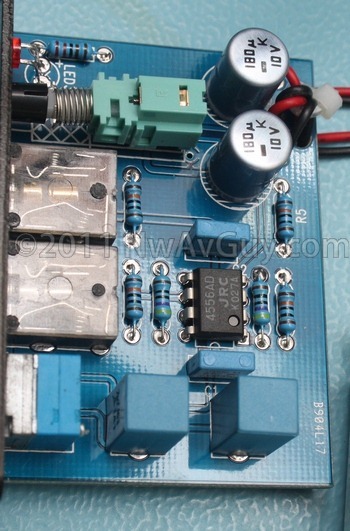 JRC 4556: This design uses the Japan Radio Company (JRC) NJM4556AD (also called the JRC4556, JR4556, etc.) op amp. This is a $0.50 part and many Cmoy DIYers seem to favor other op amps instead. But the performance, as you’ll see, is more than respectable. Running from a bipolar 15 volt (30 volt total) supply, it’s rated to swing 25 volts peak-to-peak into 150 ohms which is 83 mA peak current. The output current is specified at 70 mA but it can obviously exceed that. It’s specified for audio use with impressively low THD. The 4556 looks decent on paper and even more so on the test bench driving loads it was never intended to drive.
JRC 4556: This design uses the Japan Radio Company (JRC) NJM4556AD (also called the JRC4556, JR4556, etc.) op amp. This is a $0.50 part and many Cmoy DIYers seem to favor other op amps instead. But the performance, as you’ll see, is more than respectable. Running from a bipolar 15 volt (30 volt total) supply, it’s rated to swing 25 volts peak-to-peak into 150 ohms which is 83 mA peak current. The output current is specified at 70 mA but it can obviously exceed that. It’s specified for audio use with impressively low THD. The 4556 looks decent on paper and even more so on the test bench driving loads it was never intended to drive.
GOLDEN EAR OP AMPS: The preferred op amp for Cmoy designs seems to be the TI/Burr-Brown OPA2134 or OPA134. Tangent has an op amp list that describes trade offs and even supposed sound quality. The 4556 doesn’t even make that lengthy list. Cmoy op amps seem to be sometimes chosen based on heavily biased sighted listening tests and an apparent misunderstanding of what specs matter for audio. The greatest single weakness when using an op amp as a general purpose headphone amp is current capability. The OPA2134 is only rated for half the current output of the 4556—35 mA vs 70 mA. In fact many (most?) op amps on the Tangent list are rated for less than 70 mA.
SLEW RATE MYTH: There’s a myth faster slew rate is highly desirable and some DIY sites and forum members throw around impressive slew rate numbers. But a headphone amp only needs about 1 V/uS of slew rate to handle any realistic signal it will ever see. So a 30+ V/uS op amp is no better than the lowly 4556 rated at 3 V/uS. Faster op amps may perform worse in other areas—especially power consumption which is important in a battery powered device.
SPEED OVERDOSE: It’s easy to understand how a “fast amp” seems desirable but think of it this way: If a single dose of aspirin gets rid of your headache using 100 times that amount is generally a bad idea as the side effects could be lethal. The same is true of ultra fast amps—they’re often less stable, more power hungry and noisier. Best-in-class designs are all about understanding the big picture, what matters most, and balancing the most important parameters and trade-offs. Even with a cost-no-object design, slew rates well beyond what’s needed are often undesirable. This is a long way of saying the 4556 is plenty fast in this application.
4556 VS OPA690 VIRTUAL GROUND: As mentioned above, the 4556 datasheet specifies 25 volts p-p into 150 ohms for 83 mA of peak current. That’s 166 mA total current from both channels. The OPA690 in the Mini3 is rated at 160 mA and shared between the channels. In other words, on paper, the two designs have similar peak current capability. In reality, as you’ll see below, the 4556 in this Cmoy far outperforms the Mini3 in nearly all measurements. This is largely because the Cmoy uses a conventional “real” ground vs the virtual ground (“third channel”) in the Mini3.
NO SERIES OUTPUT RESISTOR NEEDED: The 4556 is supposedly current limited. And, indeed, I tried to blow this one up but failed. It measures just as great after driving a short as before. The series short circuit protection resistor required by the AD8397, and placed inside the feedback loop in the Mini3, is a likely reason for some of its poor performance. The 4556 can be directly connected to the headphones as it is in this design.
CMOY PCB: In the photo you can see the 470 ohm and 100K 1% feedback resistors flanking the JRC 4556. The two 100K resistors above them in the photo provide the input bias for the op amp. The LED dropping resistor is in the top left. Blue boxed film capacitors are used for the input caps (bottom of photo) and decoupling (flanking the 4556). The volume pot is a 9mm enclosed type with a metal cast bearing. The 4556 is soldered in place making “opamp rolling” more difficult.
BATTERY LIFE: The idle quiescent current for the 4556 is rated at 8 mA and that’s exactly what I measured. The power LED, however, only runs from one battery and adds about 2 mA. From a 200 mAH battery this is 20+ hours of battery life at low listening levels and perhaps 10+ hours if you have power hungry headphones and like it loud. This is roughly triple the battery life of the Mini3 as there’s no virtual ground and the slower 4556 consumes less power. The LED is a bit of a design flaw as it may help one battery die before the other by adding 20% more idle drain to one battery—see Uneven Battery Life below.
UNEVEN BATTERY LIFE : Several people, such as the author of this Tangent article, claim dual battery designs may be a poor choice because if one battery runs dead before the other one. The theory is the amp will output DC and may damage your headphones. I discuss this in more detail in the Tech Section of the 3 Channel Virtual Ground article. In testing the theory, this Cmoy still has only 4 mV (negligible) DC offset with one 9 volt battery fully charged and the other breathing its last breath at 1.3 volts. As battery hits 1.2 volts, if it’s the negative battery, the amp just dies with no DC offset. If it’s the positive battery dying the amp will sometimes output serious DC—not a good thing. Long before it gets to 1.2 volts, however, it clips the audio signal badly and sounds terrible. So, in other words, anyone listening would have ample warning it was dying. Even single battery amps can output DC when the battery drops too low.
BATTERY MITIGATION: If I were using this amp on a daily basis, I’d disconnect the LED so the power draw was the same from both batteries, and use brand new alkaline batteries from the same package (or reasonably matched rechargeables). The batteries will more or less die at the same time and any DC problem at the very end when they’re down to the 1.3 volt threshold will quickly finish them off. Your headphones should be relatively safe—especially if you’re listening when it happens. I would , however, suggest not leaving the amp on when you’re not listening to it. But that’s true even of a single battery amp. The only 100% cure is a DC protection circuit.
DC OFFSET: I measured 4.5 mV in both channels which is sufficiently low. Contrary to myth, it doesn’t change with even large battery voltage mismatch (see above).
FREQUENCY RESPONSE: It doesn’t get much better than this. It’s dead flat from 10hz to 48 Khz. The slight 0.1 dB roll off you see at 5 hz are the 2.2 uF input caps. The channel balance is near perfect but with the volume control all the way up and no gain, that’s not surprising (although my FiiO E5 proves otherwise). This is driving 150 ohms to my standard reference output of 400 mV RMS:
POWER OUTPUT: Cmoy amps are intended for higher impedance headphones. This one does the job with a very healthy 180 mW into 150 Ohms. By comparison, the Mini3 managed 38 mW into the same load. Into a 15 ohm load it can manage 67 mW--a lot better than most portable players including any iPod or even the Cowon player I tested. Into 600 ohms you would get a still healthy 50 mW. To put this in perspective the popular Sennheiser HD600/650’s need about 2 volts RMS for any sane person and the 4556 with dual 9 volt batteries can deliver over 5 volts (nearly 15 volts peak-to-peak) to those headphones. The 15 ohm distortion is surprisingly low at about 0.003% at lower levels and it stays below 0.008% right up until it clips. The 150 ohm distortion is also seriously low in the 0.0008% range around 1 volt output:
POWER OUTPUT 33 OHMS: Because a Cmoy isn’t designed to drive 16 ohms, I also tested it at 33 ohms where it managed a very respectable 121 mW or roughly the same as the Mini3. And this is with both channels driven: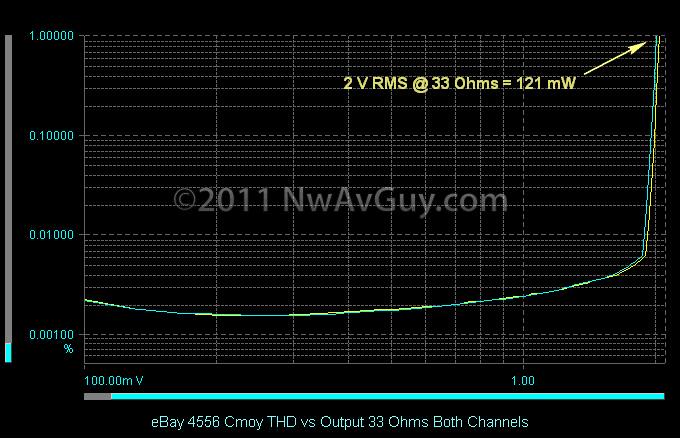
THD vs FREQUENCY: Here’s the THD+N at 400 mV output into both 150 ohms (yellow) and 15 ohms (blue) versus frequency. The drop above 10 Khz is due to the harmonics falling above the audio band. The performance is excellent into both loads and consistent with the 4556 datasheet:
THD SPECTRUM 150 OHMS: Not much to see here. Both the 2nd and 3rd harmonics are way down at –110 dB. My rule of thumb is anything below –70 dB for the 2nd harmonic and –80 dB for everything else is very likely inaudible. So this clears the bar by a mile:
THD SPECTRUM 15 OHMS: Making it work harder, here’s the result into 15 ohms. The relatively benign 2nd harmonic is still way down at –90 dB and the 3rd harmonic is at nearly 100 dB. This is way better than I was expecting into such a tough load:
RESIDUAL DISTORTION: Here’s the residual distortion waveform at 400 mV out into 15 ohms. It’s clean with no surprises. The 4556 is a very decent op amp even with a 15 ohm load (most op amps are only specified down to 600 ohm loads, the 4556 is specified down to 150 ohms but 15 ohms is another order of magnitude worse):
THD+N 20 HZ: Into 15 ohms at 20 hz the Cmoy does very well. The benign 2nd harmonic is just over –90 dB and everything else is below –100 dB: 
THD+N 20 KHZ: This is also an excellent performance into 15 ohms (measurement bandwidth to 80 Khz):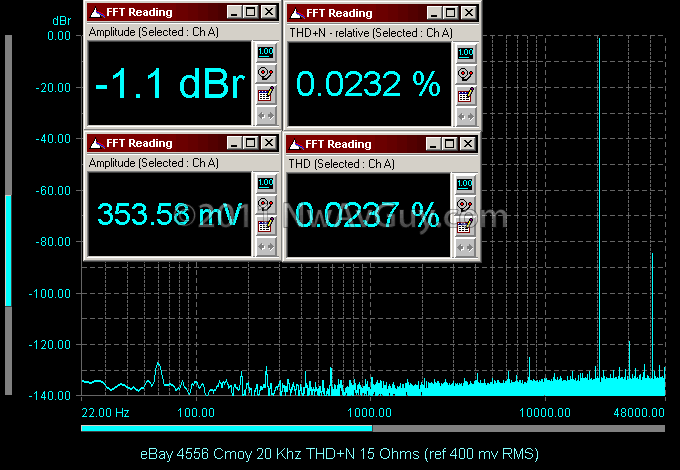
CCIF IMD: Another great performance into 15 ohms. Everything in the audio band is down around –90 dB or better:
SMPTE IMD: Again, great performance. The sidebands around the 7 Khz signal are below –100 dB:
INTERNCHANNEL IMD: The channel shown is driving 0.9 volts at 1 Khz into 15 ohms. And the other channel is driving 0.9 volts at 300 hz into 15 ohms. I normally run this at 1 volt but that’s clipping for the Cmoy, so I had to lower it slightly to 0.9 volts. The result here is further proof how much better a “real ground” performs than a virtual ground. If you look at this test on the AMB Mini3 the result was far worse (see 2nd graph below). Here there’s mostly just the expected 300 hz crosstalk and the expected harmonics of the 1 Khz signal. There’s almost no actual IMD despite this being a Class A/B op amp and all the power supply ripple and “ground contamination” the 3 channel proponents claim are a problem:
MINI3 INTERCHANNEL IMD FOR REFERENCE: Compare the Mini3’s virtual ground design to the result above and note the much higher intermodulation products and dense “forest” of distortion created by the shared artificial ground:
VOLUME & GAIN: This Cmoy, oddly, has unity gain with the volume all the way up. In other words it has no voltgae gain. This is the design’s Fatal Flaw:
OUTPUT IMPEDANCE: With a 100K “load: the voltage was 401.4 mV (see above) and dropped to 398.5 mV with a 15 ohm load. This works out to an extremely low output impedance of 0.1 ohms (which is at least partly my cables, the jack, etc.). The reason it’s so low is there’s no series output resistor or capacitor between the op amp and the headphone jack and the op amp is operating at maximum feedback. This is as close to ideal as it usually gets.
CHANNEL SEPARATION (CROSSTALK): Again, this shows how much better a real ground performs compared to a virtual ground. This is excellent crosstalk performance and is in the range of just the output jack itself. The ground layout on the PCB helped here:
NOISE: The noise performance at half volume was excellent. But there’s a reason—no voltage gain. Most headphone amps have at least 8 - 12 dB of gain but this one has none. It shows the 4556 itself is very quiet:
CHANNEL BALANCE: The worst case channel balance was, as is often the case, at –45 dB--the lowest volume setting I measure at. It was only slightly over 1 dB which is very respectable and typical of the better analog pots (NuForce should take notes here!):
PHASE: Like the Mini3, the Cmoy had essentially perfect phase performance:
SQUARE WAVE RESPONSE: Driving the reactive load of real 16 ohm headphones (Sennheiser CX300’s) the Cmoy had only a tiny bit of overshoot and no significant ringing. The tiny peak could be removed by adding some compensation to the feedback loop. Overall this is excellent performance:
SLEW RATE: The large signal performance is shown below and the slew rate measured 3.8 V/uS which exceeds the worst-case 4556 spec of 3 V/us. The Cmoy only needs a 1.2 V/uS slew rate so this is plenty fast enough:
THE FINE PRINT: The measurements, unless otherwise noted, were made at max volume which is unity gain. The batteries were 8.4 volt Ni-Mh rechargeables and measured 9.0 volts while running the amplifier. All measurements were consistent with my more recent reviews and the methods outlined in my Testing Methods article.
TECH SECTION SUMMARY: As I said in the first part of the review, I was impressed how well the 4556 works as a headphone amp. Considering the measurements are basically of the 4556 itself, with little besides potentially the PCB layout and batteries to hinder its performance, most of this shouldn’t be a huge surprise. But I was surprised the power output matched the Mini3 into 33 ohms and the distortion was so low into 15 ohms. Whoever designed this Cmoy PCB did a good job with the layout, grounding, etc. The measurements clearly show the superiority of a real ground vs a virtual or “3 channel” ground. I need to correct the gain flaw and conduct some follow up measurements, but consider the 3 channel/virtual ground myth further busted. And don’t underestimate a lowly $0.50 op amp or Cmoy!
